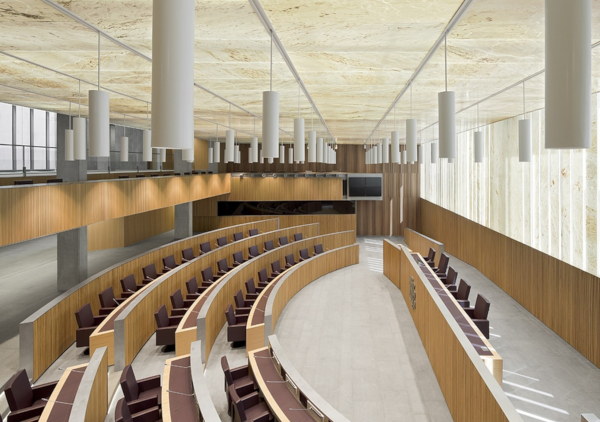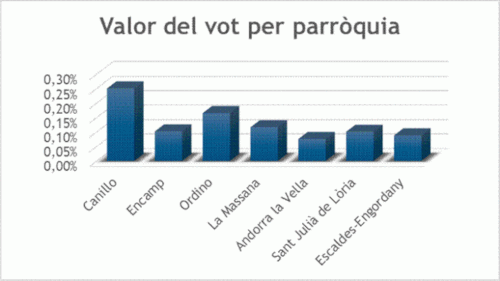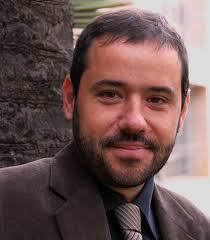The academician Lluís Vicent reflects on the political changes that different models of election and representativeness would bring in Andorra
 Lluís Vicent, first rector of the Open Lasalle University of Andorra and corresponding academician of the Royal European Academy of Doctors-Barcelona 1914 (RAED), published on April 28 in “Diari d’Andorra” the study “Com canvia el Consell General d’Andorra en funció del sistema electoral” (How the General Council of Andorra changes according to the electoral system), in which he makes a curious and documented comparison of how Andorran politics could change if its Constitution had chosen electoral and representation systems different from the current one, which he also presents and analyzes. “Applying a primary logic, surely it would be affirmed that the seats of a Parliament should be proportional to the votes of the voters, that is, if a party votes for 30% of the population, it should have 30% of seats. However, the numbers make this application impossible”, begins his reflection.
Lluís Vicent, first rector of the Open Lasalle University of Andorra and corresponding academician of the Royal European Academy of Doctors-Barcelona 1914 (RAED), published on April 28 in “Diari d’Andorra” the study “Com canvia el Consell General d’Andorra en funció del sistema electoral” (How the General Council of Andorra changes according to the electoral system), in which he makes a curious and documented comparison of how Andorran politics could change if its Constitution had chosen electoral and representation systems different from the current one, which he also presents and analyzes. “Applying a primary logic, surely it would be affirmed that the seats of a Parliament should be proportional to the votes of the voters, that is, if a party votes for 30% of the population, it should have 30% of seats. However, the numbers make this application impossible”, begins his reflection.
 The peculiarity of the Andorran electoral system is that it’s a combination of systems with its own pros and cons. “The most common methods are the Hondt method and the Hamilton method (or the maximum residues) -said Vicent-. Hamilton’s method is what is known in Andorra as ‘the rest’ and is used for the national constituency. In contrast to the proportional systems, there are the uninominal binary systems, where the one that obtains the most votes wins.This is the parish vote system for the general elections of Andorra in which the most voted list takes the two seats. The system of the general elections of Andorra is twofold: proportional in the national circumscription, and binary with the same number of seats in each parish, which will overweight the vote of the less populated parishes “.
The peculiarity of the Andorran electoral system is that it’s a combination of systems with its own pros and cons. “The most common methods are the Hondt method and the Hamilton method (or the maximum residues) -said Vicent-. Hamilton’s method is what is known in Andorra as ‘the rest’ and is used for the national constituency. In contrast to the proportional systems, there are the uninominal binary systems, where the one that obtains the most votes wins.This is the parish vote system for the general elections of Andorra in which the most voted list takes the two seats. The system of the general elections of Andorra is twofold: proportional in the national circumscription, and binary with the same number of seats in each parish, which will overweight the vote of the less populated parishes “.

Dr Lluís Vicent
Vicent reviews the virtues and shortcomings of all these methods, including mixed ones, and adds the importance of the territorial representation that practically all European countries bet on, which makes the chosen model even more complex, in addition to the proportional barriers, that allow or not the access of a political option to have representation. That struggle against the atomization of parliaments, councils or plenums has as its victims some minorities that could become significant. “Those with the greatest presence in large cities often complain about the overweight of less populated areas, arguing that it’s unfair to voters in the capital cities. The others argue that a purely proportional system may imply that the most depopulated areas are left unattended due to the low impact they have on elections. Perennial tension for which there are no magic solutions”, he says.
In the last part of his study, Vicent proposes various scenarios based on the methods used and the advantages and disadvantages that each of the current candidates would have. “This exercise could be repeated as many times as the imagination would allow us to change the weight of the parishes within the Council, electoral barriers can be applied with different minimum quotas, and the results would change. The representativeness of the people is imperfect and is a subject of eternal discussion that will suffer changes periodically in the passage of time”, he concludes.




